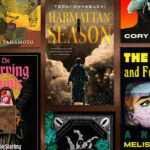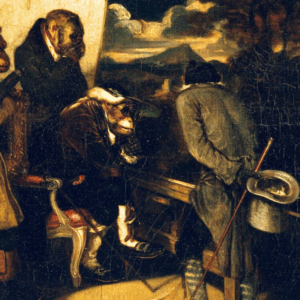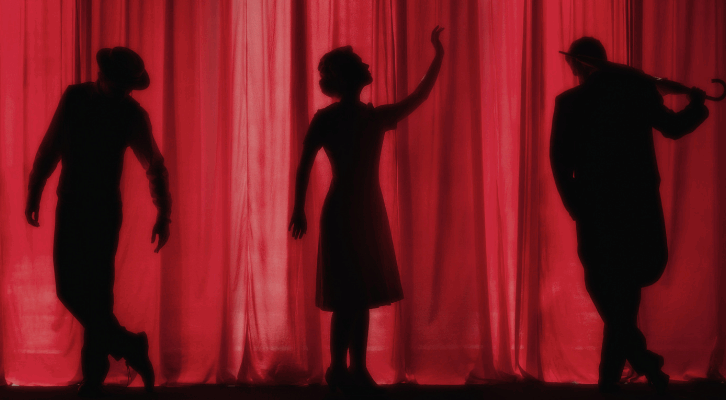
Taking Center Stage: Eight Novels That Celebrate Black Performance
Lauren Morrow Recommends Percival Everett, Zadie Smith, Nicole Cuffy, and More
At the start of Ahmir “Questlove” Thompson’s documentary Sly Lives! (AKA The Burden of Black Genius), about the enigmatic, culture-shifting musician Sly Stone, Thompson posits a theory: “For Black artists in America, success can be more frightening than failure.” No doubt, success for such performers can mean isolation, extreme pressure from all sides, and an unrelenting spotlight.
In my debut novel, Little Movements, the protagonist, Layla, is overwhelmed by these truths when she’s selected to be the choreographer-in-residence at a prestigious arts institution in rural Vermont. She’s finally getting a chance to pursue her passion, but this means time away from her husband and the Brooklyn neighborhood she’s called home for a decade, leaving the stability of a full-time job, and contending not only with the institution’s expectations, but also those of her bold, ambitious young dancers, her friends and family, the anonymous onlookers commenting on social media, dance critics—the world.
For Black artist’s, success rarely comes without strings, particularly given the history of Black performance in America. From minstrelsy to cake walks to the chitlin circuit, the audience has always been crucial to the context. Who created the work, for whom, and with what intent in mind?
In his brilliant book A Little Devil in America, Hanif Abdurraqib examines how Black performance is woven into the fabric of American life and culture—adored, abhorred, exploited, commodified, appropriated. He states that “showing off is something you do for the world at large and showing out is something you do strictly for your people.” This is as true today as it has ever been, and it’s not hard to draw a line from the past to the present—every actor on a renowned theater stage or laugh-track sit-com, every singer at an indie venue or worldwide, record-breaking stadium tour. They’re showing off or showing out. Setting it off or selling out. Sometimes a combination of all at once or at different points in a night, a year, a career.
A Black person taking center stage can, in itself, represent protest, or it can signify conformity. An audience’s expectations can be met or disrupted by what the performer brings. From excellence and respectability to rage and raunch to the abstract and avant-garde.
The following books explore performance in various ways—its power and pressures—beautifully exposing the talent and vulnerability of the characters, and turning the reader into an audience member, eager to give a standing ovation.
*

Dawnie Walton, The Final Revival of Opal and Nev
This novel rocks just as hard as its heroine, Opal, a badass Black singer in the ‘60s and ‘70s made in the image of icons like Grace Jones and Betty Davis. There are many unforgettable performances by Opal, from a girlhood choir scene where her presence steals the spotlight from her more vocally talented sister to the central event, a—record label showcase gone diabolical. Racial issues are central to the novel, making Opal’s onstage self-assuredness a feast for her fans, lighter fluid to her haters. Although heavy themes permeate the novel, the multiple POVs make for a read that’s incredibly fun and funny. Opal is an icon, a goddess, someone you will swear (hope!) is real after reading the book.
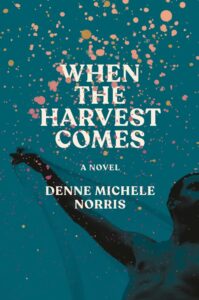
Denne Michele Norris, When the Harvest Comes
Davis is a professional violist whose estranged pastor father dies on the same day as his wedding to Everett, a white man from a wealthy family. It’s an incredibly tender story, and some of my favorite scenes involve Davis and music. The viola is like an extension of him, his daily tuning is a meditative practice that brings him a unique peace. We eventually get to see Davis in all his glory onstage—an updo, a sparkling red jumpsuit, stunning—the theater pin-drop silent until it fills with the rich melody he creates. His proud, Black queerness takes the spotlight on one of the world’s preeminent stages, playing the sort of music that is not expected of him but that he’s found home in.
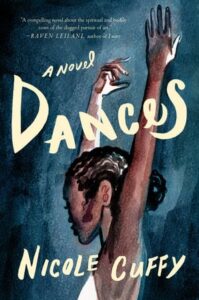
Nicole Cuffy, Dances
Cece is a young Black ballerina who has trained tirelessly her entire life and is named the first Black principal dancer for New York City Ballet, much like Misty Copeland was for ABT (coincidentally, this is her final season). Cuffy takes readers into the cutthroat world of ballet, where one wrong turn could literally change everything. Cece performs elegance, beauty, and perfection while sweating through excruciating pain, enduring enormous levels of judgement. The book explores the pressures of being a “first,” the highs and lows of success, and the family traumas that shape Cece while pushing her forward. This is a must-read for ballet fans and anyone interested in how stars are born.
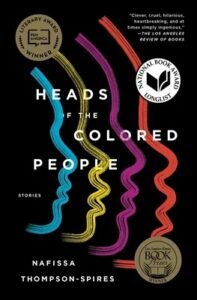
Nafissa Thompson-Spires, “Whisper to a Scream” from Heads of the Colored People
This collection is brilliant, and this story is such a shrewd, moving depiction of modern performance. Raina is a teenager who creates YouTube ASMR videos—her face hidden—and has a sizable following. But she must deal with bullying by her male classmates, shaming by her mother, and the occasional anonymous pervert. Still, the videos that truly bring Raina pain are the TV commercials she films with her divorced parents for the “family” car dealership. She must squeeze into a dress a size too small and smile between them—performing family. Thompson-Spires does a remarkable job of reframing performance, shame, and danger in this story that’s nothing short of a marvel.
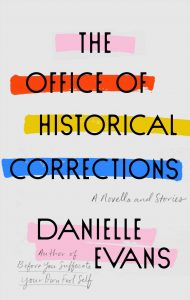
Danielle Evans, “Happily Ever After” from The Office of Historical Corrections
This story explores grief, sex, and performance through a Titanic museum employee who finds herself in a pop star’s music video being filmed there. She’s covered in body paint and glitter like the rest of the cast (there is an underwater sea monster theme, naturally), but in her uniform, behind the counter—nearly unchanged. It’s a strange role and the least performative of those she takes on throughout this story of shapeshifting. Halloween requires a slutty costume. Being a girlfriend requires sporting her boyfriend’s team’s jersey. Being the daughter of a dying woman demands professional adult attire in an attempt to be respected, taken seriously. Cosplay all around. But crucially, at the beginning, she’s denied the chance to play the princess at the museum’s children’s parties. Even in a world of dress-up, there are limits.

Percival Everett, Erasure
Thelonious “Monk” Ellison is an academic who forces himself into the performance of a lifetime when he writes (and sells for an obscene amount) My Pafology, later retitled Fuck, a book that exploits nearly every Black stereotype. He then must conceal his intellectual identity in order to present as someone who wrote such a book, contriving a new voice and a tragic “street life” backstory under the pseudonym Stagg R. Leigh (it’s worth looking into the folklore of Stagger Lee). Shockingly, 50 pages of Erasure are My Pafology, appearing midway through and testing the fictional publisher and the real-time reader. This is next-level performance as Everett forces readers to engage with some of the most offensive writing they’ve likely ever read before pulling back out to the central narrative. It’s shocking, and provocative, and genius.
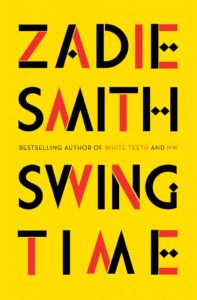
Zadie Smith, Swing Time
Two young biracial women meet in a London dance class as girls—Tracey is the more technically talented, while the unnamed narrator has an emotive voice and big ideas about race and the world. While performance is a major part of their lives individually—Tracey becoming a chorus line dancer, the narrator becoming an assistant to a pop star—a performance element that is particularly striking here is the way Smith traces dance from past to present, from Africa through the diaspora. Readers are given a taste of everyone from Michael Jackson (an ongoing motif throughout the novel and self-described “slave to the rhythm”) to the Nicholas Brothers to a Kankurang dancers of West Africa (“the greatest dancer I ever saw”). I could go on forever about the layers of Black performance here—it’s, unsurprisingly, a stunner.
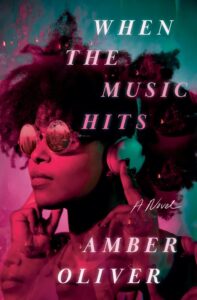
Amber Oliver, When the Music Hits
Billie is a new assistant at a music label, and one of the book’s many thrills is seeing up-and-coming artists through her eyes. Oliver unpacks the myriad intangible elements that make someone a star while also spotlighting the very real roadblocks Black and brown musicians face in the industry—including assumptions white execs make about what appeals to certain audiences and how stereotypes are exploited to financial success. Samirah, the central performer, entrances Billie—her lyrics punching over vibrating beats, her voice gritty and sultry. Her talent and authenticity are a strong contrast to the formulaic, often offensive “urban” performers the label’s execs are pushing. These opposing performers—and what they inspire in audiences—paint a striking picture of a complicated industry.
__________________________________
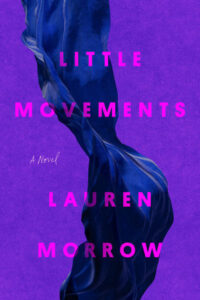
Little Movements by Lauren Morrow is available from Random House.
Lauren Morrow
Lauren Morrow studied dance and creative writing at Connecticut College and earned an MFA in fiction from the Helen Zell Writers’ Program. She was a Kimbilio Fellow and an Aspen Words Emerging Writer Fellow and is the recipient of two Hopwood Awards, among other prizes. Her writing has appeared in Ploughshares and the South Carolina Review. She worked in publicity at BAM (Brooklyn Academy of Music) and Alvin Ailey American Dance Theater and is now a senior publicist at Dutton, Plume, and Tiny Reparations Books. Originally from St. Louis, she lives in Brooklyn.












